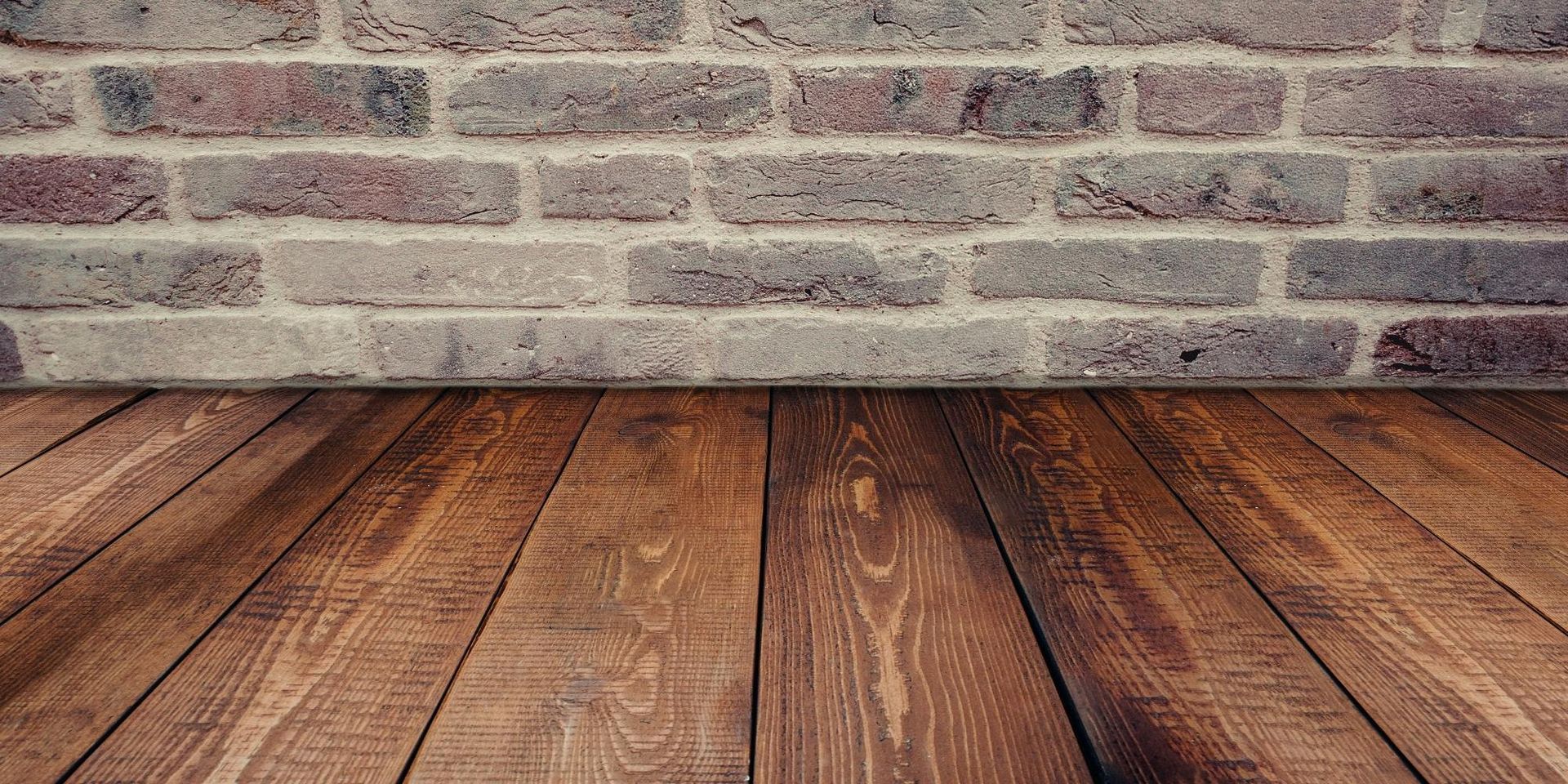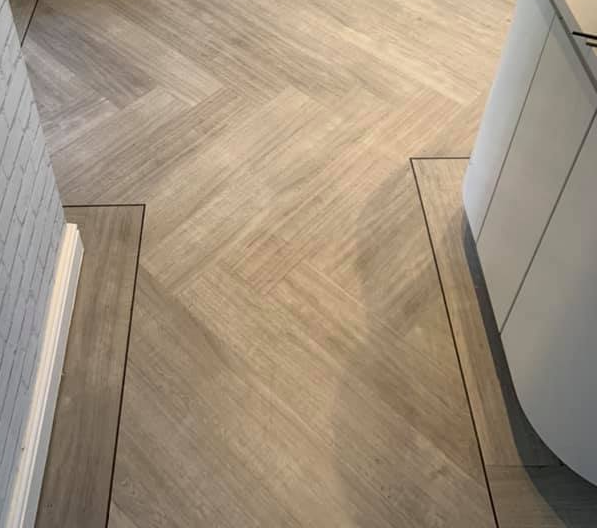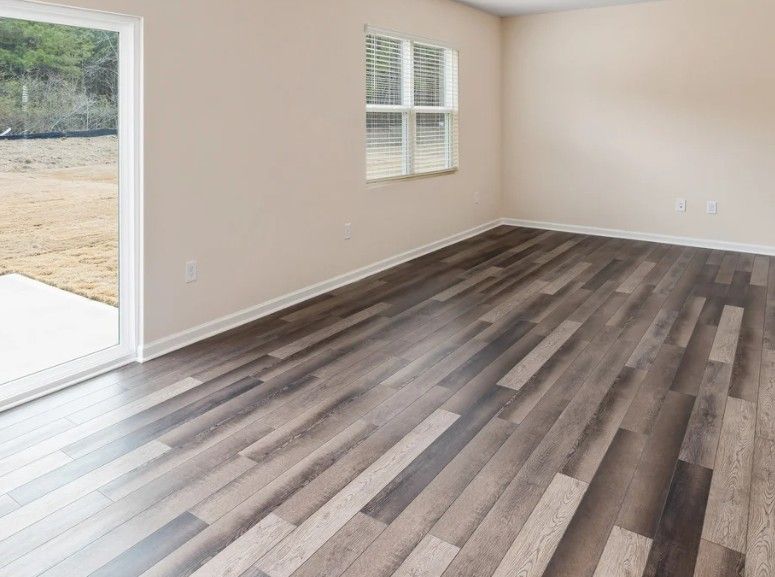What is the best type of solid hardwood flooring in Nottingham
What is the most durable hardwood flooring?

Last month, we had a client from West Bridgford call us in a bit of a panic. She'd spent weeks researching wooden floors for her Victorian terrace, only to discover that her friend's "beautiful" engineered flooring had started showing wear patterns after just two years of family life with young children. "I can't afford to get this wrong," she told us during our consultation. "We've saved for three years to do this properly, and I need floors that'll still look stunning when my children bring their children to visit."
Sound familiar? You're not alone in wanting floors that combine timeless beauty with rock-solid durability. Here in Nottingham, we see homeowners grappling with this same dilemma every single day - especially those living in period properties where the flooring choice needs to respect the home's character whilst standing up to modern family life.
The truth is, not all hardwood floors are created equal. Some species can handle decades of foot traffic, pet claws, and the occasional dropped toy without breaking a sweat, while others might show their age after just a few years. The difference often comes down to understanding wood density, grain patterns, and how different species respond to our changeable British climate.
In this comprehensive guide, we'll walk you through the most durable hardwood options available, helping you make an informed decision that'll serve your family beautifully for generations. We'll cover everything from the science behind wood durability to real-world performance in Nottingham homes, plus practical advice on choosing the right option for your specific needs and lifestyle.
What is the Most Durable Type of Hardwood Flooring?
The most durable hardwood flooring options are oak, maple, and hickory, with oak leading as the gold standard for longevity. These species offer exceptional durability due to their:
Top 3 Most Durable Hardwood Types:
• Oak flooring - Janka hardness rating of 1,290-1,360 lbf, naturally resistant to dents and scratches
• Maple flooring - Janka hardness rating of 1,450 lbf, excellent for high-traffic areas
• Hickory flooring - Janka hardness rating of 1,820 lbf, the hardest domestic hardwood option
What Makes These Woods So Durable:
• Dense grain structure that resists impact damage
• Natural tannins that provide built-in protection against wear
• Proven track record in British homes for over 100 years
• Refinishing capability allowing floors to be restored multiple times
For maximum durability, solid wooden flooring fitters in Nottingham typically recommend 20mm thick solid oak boards with a site-applied finish. This combination can last 50-100 years with proper care, making it the most cost-effective long-term flooring investment for period properties and modern homes alike.
The key isn't just choosing a hard wood - it's selecting the right thickness, grade, and installation method for your specific home and lifestyle needs.
Understanding Wood Durability: The Science Behind Long-Lasting Floors
When we're called out to assess flooring damage in Nottingham homes, there's usually one common thread - the homeowner chose based on appearance alone, without considering the wood's inherent durability characteristics. Let's change that by understanding what actually makes one hardwood species outlast another.
The Janka Hardness Scale: Your Durability Compass
The Janka hardness test measures the force required to embed a steel ball into wood, giving us a reliable way to compare species. Here's how the most popular options stack up:
Domestic Hardwood Rankings:
• Hickory: 1,820 lbf (exceptionally hard)
• Hard Maple: 1,450 lbf (very hard)
• White Oak: 1,360 lbf (hard)
• Red Oak: 1,290 lbf (moderately hard)
• American Cherry: 995 lbf (moderate)
• American Walnut: 1,010 lbf (moderate)
Beyond Hardness: What Really Matters for British Homes
Whilst hardness ratings provide a good starting point, we've learned from fitting floors across Nottingham that several other factors play massive roles in real-world durability:
Grain Pattern Stability Woods with tight, consistent grain patterns like maple and beech handle our climate changes better than species with dramatic grain variations. This matters enormously in period properties where heating can be inconsistent.
Natural Moisture Content Oak's cellular structure naturally adapts to humidity changes, which explains why it's been the flooring of choice in British homes for centuries. Cherry and walnut, whilst beautiful, can be more temperamental in our damp climate.
Tannin Content The natural tannins in oak act like built-in protection against moisture and insects - essentially, the wood protects itself. This is why we still find solid oak floors in perfect condition in Victorian homes throughout Nottingham.
The Unbeatable Durability Champions: Our Top 3 Recommendations
After fitting hundreds of floors across Nottingham's diverse housing stock - from Victorian terraces in The Park to modern builds in West Bridgford - we've seen which species truly stand the test of time.
Oak: The Gold Standard for British Homes
There's a reason oak has dominated British flooring for over 500 years. We regularly work on Georgian and Victorian homes where the original oak floors are still solid after centuries of use.
Why Oak Wins for Durability:
• Dense cellular structure resists denting from dropped items
• Natural antimicrobial properties prevent rot and decay
• Responds predictably to seasonal humidity changes
• Can be sanded and refinished 8-10 times over its lifetime
• Quarter-sawn oak boards show minimal movement even in period properties
Real-World Performance: Last year, we refinished 150-year-old oak floors in a Mapperley home. After light sanding, they looked brand new - that's the kind of longevity we're talking about.
Maple: The Athletic Performer
If your household includes active children, pets, or you're planning to use the space for entertaining, maple's exceptional impact resistance makes it a brilliant choice.
Maple's Durability Advantages:
• Highest Janka rating among common flooring woods
• Minimal grain raise, even with moisture exposure
• Light colour hides scratches better than darker species
• Extremely stable in heated environments
• Takes protective finishes exceptionally well
Perfect For: Kitchen-diners, hallways, and any high-traffic areas where you need floors that won't show every scuff mark.
Hickory: The Heavyweight Champion
For ultimate durability in challenging environments, nothing beats hickory. We recommend it for commercial spaces, busy family homes, and anywhere maximum toughness is required.
Hickory's Unmatched Strength:
• Nearly 50% harder than oak on the Janka scale
• Dramatic grain patterns actually add structural strength
• Naturally shock-resistant - perfect for playrooms
• Excellent dimensional stability once properly acclimatised
• Develops beautiful patina that hides minor wear
Consider This: Hickory's bold grain isn't suitable for every décor style, but for durability-focused homeowners or commercial high traffic locations, it's unbeatable.
Solid vs Engineered: Which Delivers Superior Long-Term Durability?
This question comes up in nearly every consultation we have with Nottingham homeowners. The answer isn't straightforward because both can be durable - but in very different ways and circumstances.
Solid Wood Flooring: Built for the Long Haul
Solid wood boards are exactly what they sound like - single pieces of timber cut from the tree. When we install 20mm solid oak in a Victorian terrace, we're essentially giving that family a floor that could outlast the house itself.
Solid Wood's Durability Advantages:
• Can be sanded and refinished 8-12 times over decades
• No delamination risk - it's solid timber through and through
• Naturally adapts to structural settling in older properties
• Increases in value and character as it ages
• Can handle deep scratches and gouges through complete refinishing
Real-World Example: We recently refinished solid oak floors in a Sherwood home that were installed in 1923. After professional sanding, they looked absolutely stunning - that's nearly 100 years of continuous use.
Engineered Wood: Modern Durability with Limitations
Engineered flooring consists of a hardwood veneer bonded to a plywood or composite base. Quality engineered floors can be remarkably durable, but there are important caveats to understand.
Engineered Wood's Durability Profile:
• Top-quality boards with 4-6mm wear layers can be sanded 2-4 times
• More dimensionally stable on concrete subfloors
• Better suited to underfloor heating systems
• Consistent performance in high-humidity areas
• Lower initial cost allows for complete replacement if needed
The Critical Factor: Wear layer thickness determines lifespan. Boards with thin veneers (under 3mm) are essentially disposable, whilst thick-veneer engineered floors can last 25-40 years with proper care.
Which Lasts Longer in Practice?
From our experience fitting floors across Nottingham, solid wood wins for pure longevity, but engineered can be more practical in specific situations:
Choose Solid When:
• You're in a period property with suspended timber floors
• Long-term investment and character development matter
• Room heights accommodate 20mm+ thickness
• You value traditional craftsmanship and authenticity
Choose Quality Engineered When:
• Installing over concrete slabs (common in newer builds)
• Underfloor heating is present
• You need faster installation with minimal disruption
• Budget constraints require spreading costs over shorter periods
Factors That Make or Break Your Floor's Durability
Even the hardest wood species can fail prematurely if certain factors aren't properly addressed. We've seen expensive hickory floors damaged within months and budget oak installations lasting decades - the difference usually comes down to these critical elements.
Installation Quality: The Foundation of Durability
We can't stress this enough - poor installation destroys even the best hardwood. Last month, we were called to assess premature cupping in a Beeston home where another company had installed beautiful oak boards. The problem? They'd skipped proper moisture testing and acclimatisation.
Installation Factors That Affect Lifespan:
• Subfloor preparation and moisture management
• Proper board acclimatisation (minimum 7 days in the installation environment)
• Correct expansion gap sizing for room dimensions
• Appropriate fixing methods for the subfloor type
• Professional-grade adhesives and vapour barriers where needed
Red Flag Warning: If any installer offers to start work immediately without moisture testing or acclimatisation time, walk away. Proper preparation takes time but prevents costly failures.
Finish Selection: Your Floor's Armour
The protective finish on your hardwood is like armour - choose the wrong type or apply it poorly, and even the hardest wood becomes vulnerable to everyday damage.
Most Durable Finish Options:
• Oil-based polyurethane - Traditional choice, excellent durability, easy to spot-repair
• Water-based polyurethane - Lower odour, faster drying, maintains wood's natural colour
• Hardwax oils - Penetrating protection, easy maintenance, develops beautiful patina
• UV-cured finishes - Industrial strength, applied by professionals, extremely durable
Maintenance Reality Check: Site-finished floors (where we apply the protective coating in your home) generally outperform pre-finished boards for long-term durability because we can tailor the finish system to your specific needs.
Environmental Conditions: The Silent Durability Killer
British weather patterns create unique challenges for wooden floors. Nottingham's clay soil and our unpredictable humidity levels mean your floor faces constant expansion and contraction cycles.
Managing Your Home Environment:
• Maintain relative humidity between 30-50% year-round
• Address heating system irregularities that create hot spots
• Use entry mats to reduce grit and moisture ingress
• Install proper ventilation in kitchens and bathrooms
• Consider dehumidifiers in basements or ground floors of period properties
Seasonal Awareness: Oak floors naturally expand in summer and contract in winter. Small gaps appearing between boards in heated rooms during cold months are completely normal - not a durability concern.
Traffic Patterns and Lifestyle Factors
The most durable wood in the world won't help if it's not suited to how you actually live. We always assess household patterns before making recommendations.
High-Impact Lifestyle Considerations:
• Large dogs with untrimmed claws can damage any wood species
• Stiletto heels concentrate enormous pressure - even harder than steel ball bearings
• Dropped kitchen items create more damage than foot traffic
• Furniture without protective pads causes more long-term damage than children playing
• Direct sunlight through large windows can cause uneven colour changes
Maintenance Secrets That Double Your Floor's Lifespan
We often get calls from homeowners panicking about minor scratches or water marks, thinking their floors are ruined. The truth is, proper maintenance can keep even heavily-used hardwood looking brilliant for decades - whilst neglect can destroy premium floors within years.
Daily Care That Actually Matters
Forget the complicated routines you've read online. After maintaining floors in hundreds of Nottingham homes, we've identified what truly makes a difference to long-term durability.
The 80/20 Rule of Floor Care:
• 80% of protection comes from preventing damage in the first place
• 20% comes from cleaning and treatments - but this 20% is still vital
Daily Damage Prevention:
• Quality entrance mats that actually trap grit (not decorative ones)
• Felt pads under all furniture legs - check and replace every 6 months
• Pet nail trimming schedules (seriously, this prevents more damage than any cleaner)
• House slippers instead of outdoor shoes - especially in winter months
• Immediate cleanup of any liquid spills
Weekly Cleaning Reality: Microfibre dust mopping twice weekly removes abrasive particles that cause microscopic scratches. These tiny scratches accumulate over time, making floors look dull and worn even when the wood itself is perfectly sound.
Seasonal Maintenance Schedules
British weather patterns demand different care approaches throughout the year. We've developed these schedules based on what actually works in our climate.
Spring (March-May):
• Deep clean with hardwood-specific products
• Check and adjust humidity levels as heating reduces
• Inspect for winter damage - small issues are easier to fix
• Apply maintenance coats of oil or polish if needed
Summer (June-August):
• Monitor for expansion gaps closing due to humidity
• Protect floors from direct sunlight with blinds or UV film
• Increase cleaning frequency during holiday periods with more foot traffic
Autumn (September-November):
• Prepare for heating season with humidity monitoring equipment
• Deep clean before increased indoor living begins
• Check entrance mats and replace if worn
Winter (December-February):
• Watch for over-drying from central heating
• Use humidifiers if gaps between boards exceed 2mm
• Extra vigilance with salt and moisture from winter boots
When Professional Intervention Pays Off
Some maintenance tasks seem simple but require professional expertise to avoid permanent damage. We've rescued many floors where DIY attempts went wrong.
DIY-Safe Tasks:
• Regular dust mopping and appropriate cleaning
• Furniture pad maintenance and replacement
• Minor scuff removal with manufacturers' recommended products
• Humidity monitoring and adjustment
Professional-Only Tasks:
• Deep scratches that penetrate the finish layer
• Water damage assessment and treatment
• Refinishing or recoating decisions
• Structural issues like cupping or crowning
• Stain removal that requires sanding
Investment Perspective: Annual professional inspection costs around £100-150 but can identify small issues before they become expensive problems. We've seen £500 maintenance coats prevent £5,000 full refinishing jobs.
Cost vs Durability: The True Investment Picture
When clients ask us about the "cheapest" hardwood option, we always redirect the conversation to cost per year of service. A £3,000 floor that lasts 50 years costs £60 annually, whilst a £1,500 floor lasting 10 years costs £150 per year - the maths speaks for itself.
Initial Investment Breakdown
Based on current pricing for quality materials and professional installation across Nottingham, here's what you can expect to invest:
Solid Wood Flooring Costs (per square metre):
• Oak (Premium Grade): £80-120 supply + £35-45 installation
•
Maple: £90-130 supply + £35-45 installation
•
Hickory: £100-140 supply + £40-50 installation
• Cherry: £110-150 supply + £40-50 installation
Engineered Wood Flooring Costs (per square metre):
• Oak Engineered (6mm wear layer): £60-90 supply + £30-40 installation
• Maple Engineered: £70-100 supply + £30-40 installation
• Premium Multi-Layer: £50-80 supply + £25-35 installation
Hidden Costs to Factor In:
• Subfloor preparation: £15-25 per sqm (often needed in period properties)
• Moisture barriers: £8-12 per sqm
• Skirting board replacement: £15-25 per linear metre
• Professional site finishing: £20-30 per sqm additional
Long-Term Value Analysis
The real financial picture emerges when you calculate lifetime costs including maintenance, refinishing, and eventual replacement needs.
50-Year Cost Comparison (40sqm living room example):
Option 1: Premium Solid Oak
• Initial cost: £4,600
• Refinishing (3 times): £2,400
• Annual maintenance: £1,500
• Total 50-year cost: £8,500
• Cost per year: £170
Option 2: Quality Engineered Oak
• Initial cost: £3,200
• Refinishing (2 times): £1,600
• Replacement after 30 years: £3,500
• Annual maintenance: £1,200
• Total 50-year cost: £9,500
• Cost per year: £190
Option 3: Budget Engineered
• Initial cost: £2,400 • Complete replacement (4 times): £9,600
• Annual maintenance: £1,000
• Total 50-year cost: £13,000
• Cost per year: £260
Property Value Impact
Quality hardwood flooring consistently adds more value than it costs, particularly in Nottingham's competitive housing market.
Estate Agent Insights:
• Solid wood floors add 2-5% to property values
• Quality engineered floors add 1-3% to property values
• Period properties with original or sympathetic wood floors sell 15% faster
• Buyers consistently rank hardwood floors in top 3 desired features
Selling Advantages:
• Photographs beautifully for online listings
• Appeals to buyers seeking low-maintenance options
• Suggests quality throughout the property
• Reduces time on market in competitive areas like West Bridgford and Beeston
Return on Investment Timeline
Most of our clients see positive returns on their flooring investment much sooner than expected:
Immediate Benefits (Year 1):
• Reduced cleaning time and effort
• Improved indoor air quality
• Enhanced daily living experience
• Increased pride in home appearance
Medium-term Returns (Years 2-7):
• Energy efficiency improvements (better insulation than tiles)
• Reduced replacement of worn carpets
• Lower maintenance costs compared to other flooring types
Long-term Gains (Years 8+):
• Significant property value increase
• Timeless appeal that never goes out of style
• Potential heirloom quality that transfers to next generation
Making Your Decision: Next Steps for Durable Hardwood Flooring
After working with hundreds of families across Nottingham, we know that choosing the right hardwood flooring feels like a big decision - because it is. You're investing in something that'll be part of your daily life for decades to come.
Quick Decision Framework
If you're feeling overwhelmed by options, use this simple framework we've developed for our clients:
For Maximum Durability: Choose 20mm solid oak with site-applied polyurethane finish
For Modern Convenience: Select quality engineered oak with 6mm+ wear layer
For High-Traffic Areas: Consider maple or hickory in either solid or engineered format
For Period Properties: Solid oak boards complement architectural features beautifully
For Concrete Subfloors: Engineered options perform more predictably
Red Flags to Avoid
Based on problems we've been called to fix, avoid any company that:
• Quotes without seeing your property and measuring moisture levels
• Suggests starting work immediately without acclimatisation time
• Can't explain the difference between solid and engineered options
• Offers prices significantly below market rates
• Won't provide local references from recent projects
Your Next Step
Ready to explore which durable hardwood option suits your Nottingham home? We offer free, no-obligation consultations where we'll assess your property, discuss your lifestyle needs, and provide honest recommendations based on 15+ years of local experience.
What happens during your consultation:
• Professional moisture testing of your subfloors
• Discussion of your durability requirements and budget
• Samples of recommended wood species and finishes
• Detailed written quote with no hidden surprises
• Timeline planning that works around your schedule
Book Your Free Consultation:
Call us on 0115 647 7207 to arrange a convenient time or complete our form along with photos of your current floors for initial advice
Don't spend another month researching online when a 45-minute consultation can answer all your questions and get you moving toward the durable, beautiful floors your home deserves.
Ready to get started? Contact our team today and let's create something beautiful that'll serve your family for generations to come.


